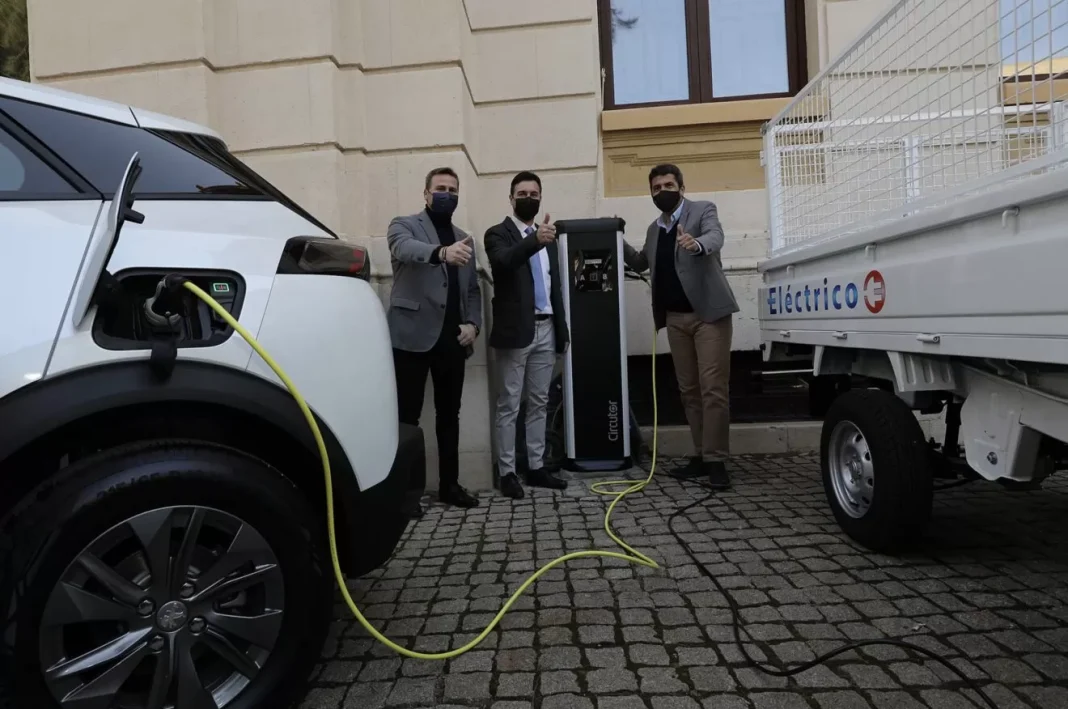Following recent announcements that some town halls in Spain are starting to catch up with the electric vehicle drive by installing charging points, although in fairness, some municipalities have had them for some time, the Provincial Government has joined in the development by announcing funding for the installation of electric vehicle charging points in 97 municipalities across the province, a much needed improvement to the infrastructure as the most recent information revealed that Spain only has 1.6 charging points every 100 kilometres, on average.
The Diputación de Alicante has allocated 1.4 million euro for the environmental initiative. “Our commitment to electric mobility is absolute because we are aware of its efficiency and its multiple benefits, both for the economy and for our natural environment, since the use of this type of transport entails significant fuel savings and contributes significantly to combat climate change and reduce air pollution”, said the deputy responsible for the area, Miguel Ángel Sánchez.
This important line of aid, created for the first time this year, adds to the more than 4.7 million euro that the Provincial Council of Alicante has allocated in this legislature to provide the town councils of the territory with electric vehicles, an action of the that 122 municipalities with less than 50,000 inhabitants have benefited and that it has allowed the supply of 171 cars and vans.
“This historic investment of 6.1 million euro constitutes the most relevant economic item in environmental matters of the provincial institution in recent years”, highlighted the deputy.
By region, the Vega Baja consistories in which the installation of charging points will be carried out are Algorfa, Benejúzar, Benferri, Benijófar, Bigastro, Callosa de Segura, Cox, Daya Nueva, Daya Vieja, Formentera del Segura, Granja Rocamora, Guardamar del Segura, Los Montesinos, Pilar de la Horadada, Rafal, Redován, Rojales, San Fulgencio and San Miguel de Salinas.
For its part, in the Marina Alta the towns of Alcalalí, Benidoleig, Benigembla, Benimeli, Calp, Castell de Castells, El Poble Nou de Benitatxell, El Ràfol d’Almúnia, El Verger, Els Poblets, Gata de Gorgos, L ‘Atzúbia, La Vall d’Alcalà, Murla, Ondara, Orba, Parcent, Pedreguer, Pego, Sanet y Negrals, Senija, Teulada, Vall de Gallinera, Xàbia, Xaló and the smaller local entities of Jesús Pobre, La Xara and Llosa de Camatxo, while in the Marina Baixa there will be Benifato, Benimantell, Bolulla, Callosa d’en Sarrià, Confrides, Finestrat, La Nucía, Orxeta, Relleu and Tàrbena.
As well as the town of Agost, in L’Alacantí; and to Algueña, Aspe, Beneixama, Biar, Cañada, El Camp de Mirra, Hondón de las Nieves, Hondón de los Frailes, Monòver, Novelda, Petrer, Pinoso, Salinas, Santa Pola, Sax and Villena, in the Vinalopó area.
Finally, the municipalities of L’Alcoià-El Comtat that will benefit from this call are Agres, Alcoleja, Alcocer de Planes, Almudaina, Balones, Beniarrés, Benilloba, Benillup, Benimassot, Castalla, Cocentaina, Fageca, Gaianes, Gorga, L’ Alqueria d’Asnar, L’Orxa, Millena, Muro de Alcoy, Onil, Penàguila, Planes, Quatretondeta and Tibi.





